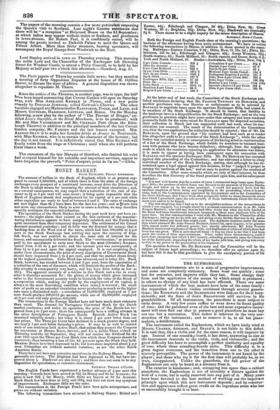THE EIIPHONICON.
SOME musical instruments are in a state of progressive improvement, and some are completely stationary. Some wear out quickly ; some last for centuries, and improve while they last. Some change their form and the application of the means by which sound is produced ; in others no change of any kind has been effected. There are some instruments of which the best makers have been of the same family: the reputation of AMATI violins continued through several genera- tions; the Butastatva and the SILBERDIANS were famous for their harp- sichords; and the fame of Toast BROADWOOD still survives in his grandchildren. Of all instruments, the pianoforte is most subject to early decay. A very few years suffice to wear down its finest quality of tone ; and the purchaser even of the best and most expensive instru- ment will soon find out that to possess a good pianoforte he must buy not one but a succession. This defect is inherent in the very con- struction of the instrument ; and to remove it is, to all but piano- makers, a desideratum. The instrument called the Euphonicon, which we have lately tried at Messrs. CRAXER, ADDISON, and BEALE's, is not liable to this defect. It is said that, like a violin and for the same reason, it will improve by age. Instead of one sounding-board, it has three answering in size as the instrument descends to the violin, viola, and violoncello ; and the great difficulty has been to accomplish a perfect similarity and equality of tone where these sounding-boards unite. This difficulty is in a great degree overcome, and the transition from one to the other is scarcely perceptible. The power of the instrument is not heard by the player ; and those who try it for the first time will probably be, as we were, disappointed. Unlike the pianoforte, the full power of the Euphonicon can only be heard at a distance from it. The exterior is handsome ; and, occupying less space than a cabinet pianoforte, the Euphonicon is not of necessity a fixture against the wall of a room, but is easily removed into any part of it. Many years have been devoted to the best method of working out the important principle upon which this new instrument depends ; and its construc- tion and appearance reflect great credit on the ingenious artist who has so successfully brought it to bear.


























 Previous page
Previous page